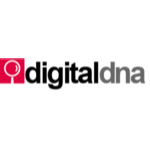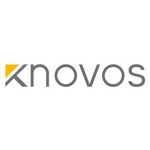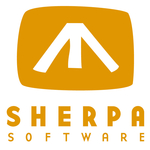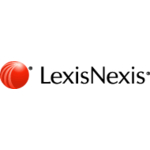List of Best Electronic Discovery Software
Showing 10 of 37 productsDigital DNA Rocket the revolutionary software designed to take your business to new heights. With its advanced technology and user-friendly interface, Digital DNA Rocket simplifies the complexities of digital marketing and helps you reach your target...Read Digital DNA Rocket Reviews
eDiscovery Point is a solution for all your electronic discovery needs. This powerful software streamlines the process of collecting, analyzing, and managing large volumes of digital data, making it the go-to platform for legal professionals. Say goo...Read eDiscovery Point Reviews
eZSuite is a software designed to streamline business processes and optimize performance. With its user-friendly interface and robust features, eZSuite is a solution for businesses of all sizes looking to increase efficiency and achieve their goals...Read eZSuite Reviews
INDICA eDiscovery is a software designed to streamline and simplify the eDiscovery process. With its advanced features and user-friendly interface, INDICA helps legal teams efficiently manage large volumes of data and navigate the complexities of mod...Read INDICA eDiscovery Reviews
Consilio Sightline is a software designed to optimize and streamline your business operations. From data collection to real-time analytics, Consilio Sightline provides a comprehensive solution for efficient decision-making. With user-friendly feature...Read Consilio Sightline Reviews
Google Vault is a software designed to simplify and streamline your data management process. With advanced features tools, Google Vault allows for efficient eDiscovery, archiving, and retention of critical organizational data. Get ready to revolution...Read Google Vault Reviews
Discovery Attender is a is a software designed to streamline the process of searching, collecting, and managing electronic data for legal discovery. With its intuitive interface features, Discovery Attender is the go-to solution for handling large vo...Read Discovery Attender Reviews
Discovery Assistant, is a solution for streamlining your discovery process. Designed to enhance every step of your legal research journey, this powerful software offers a wide range of features that are guaranteed to save you time and increase your e...Read Discovery Assistant Reviews
Concordance is a tool for managing and analyzing large volumes of text data effortlessly. With its intuitive interface features, Concordance streamlines the process of organizing, searching, and extracting insights from vast amounts of text, making i...Read Concordance Reviews
Servient eDiscovery is a solution for efficiently managing and organizing electronic data for legal and investigative purposes. With its advanced capabilities, Servient eDiscovery streamlines the process of document review and helps locate critical i...Read Servient eDiscovery Reviews
- What Is Electronic Discovery Software?
- Top Reasons Why Businesses Need Electronic Discovery Software?
- What Are the Top Key Features of Electronic Discovery Software?
- What Are the Top Benefits of Electronic Discovery Software?
- What Are the Steps to Choose the Right Electronic Discovery Software?
- What Are the Types of Electronic Discovery Software for Different Industries?
- What Are the Technology Trends for Best Electronic Discovery Software?
- What Are the Deployment Options for Electronic Discovery Software?
What Is Electronic Discovery Software?
Electronic discovery software, commonly referred to as e-Discovery software, is a software application utilized for the purpose of identifying digital data that holds relevance to a legal procedure, such as a civil case or criminal investigation.
The software commonly encompasses databases, search engines, and additional tools designed to facilitate the identification of pertinent documents, photographs, emails, and other forms of digital information in relation to the given case. The best ediscovery software has the potential to facilitate the automation of tasks associated with the gathering, safeguarding, and examination of digital evidence.
Ediscovery systems facilitates efficient data retrieval and organization, enables collaborative efforts in legal disputes, and ensures secure storage of data inside a centralized framework. This particular tool proves to be particularly advantageous in situations when there exists a substantial quantity of digital evidence.
Electronic discovery software is specifically developed to assist legal practitioners, including attorneys and other professionals in the legal field, in the process of identifying, arranging, and effectively handling digital evidence that is relevant to judicial proceedings.
Top Reasons Why Businesses Need Electronic Discovery Software?
1.The implementation of streamlined procedures in the e-discovery process has been shown to result in significant time and cost savings.
2. The best ediscovery software automates the processes of document gathering, analysis, and review.
3. The process of identifying, collecting, and organizing data is expedited.
4. One of the key benefits is the enhancement of locating and rapidly accessing electronically stored information.
5. The ediscovery systems facilitates a methodical exploration of all accessible data sources.
6. The provision of complete litigation support simplifies legal compliance.
7. The best ediscovery software aids in the evaluation and examination of pertinent evidence for the purpose of conducting risk assessment.
8. Improves the precision of document evaluations and generation.
9. Conforms to litigation hold policies and standards.
10. One benefit of utilizing this technology is the mitigation of human error and the reduction of variation in manual search operations.
11. Facilitates the capacity of several users to participate in collaborative endeavors.
12. The ediscovery systems facilitates the process of reviewing by offering features such as document labeling and highlighting.
13. Implements and maintains adequate measures to ensure confidentiality and security.
14. The system offers instantaneous surveillance of custodial personnel and documentation.
15. The best ediscovery software has a comprehensive data visualization feature that facilitates the identification of patterns and correlations within the data.
What Are the Top Key Features of Electronic Discovery Software?
1. Automated review capabilities: The capacity to expedite the processing of substantial quantities of data in a prompt and effective manner for the purpose of examination.
2. Predictive coding: The capacity to employ diverse algorithms for the purpose of predicting pertinent documents without the need for manual assessment.
3. Search and filtering: The ability to efficiently and effectively search and filter through pertinent documents and data.
4. Analytics and analytics reporting: The capacity to produce comprehensive reports and statistical analyses based on the data in order to reveal significant insights and patterns.
5. Visualization tools: The capacity to represent data in a visually comprehensible fashion.
6. Collaborative tools: The The best ediscovery software contains functionalities that facilitate the dissemination of papers among colleagues and other relevant parties involved in the process of reviewing and discovering information.
7. Reviewer management: The system possesses the ability to effectively administer reviewer/user permissions.
8. Scalable infrastructure: The capacity to expand or reduce the storage capacity in order to fit a range of project sizes.
9. Data conversion: The capacity to transform diverse data kinds into a unified format in order to optimize the processes of searching and reviewing.
10. Security and compliance: The characteristics that guarantee the security and adherence to legal regulations of data.
What Are the Top Benefits of Electronic Discovery Software?
1. Improved speed and accuracy: Electronic discovery software has the capability to efficiently and expeditiously handle and explore extensive volumes of data, significantly reducing the time required for manual data assessment. The enhanced speed and precision contribute to cost reduction in legal proceedings and guarantee the timely and accurate production of files.
2. Streamlined analysis: Cloud based ediscovery software streamlines the examination of substantial quantities of electronically stored information (ESI) through the automation of search procedures, mitigating human fallibility, and yielding more precise search outcomes.
3. Automated e-discovery: Electronic discovery software enables the automated generation of document requests, production, and distribution. This approach enhances the efficiency of the discovery process and mitigates the requirement for labor-intensive and expensive manual examination.
4. Improved collaboration: The utilization of ediscovery software enhances collaboration among discovery teams and their customers by streamlining the communication of progress and outcomes, along with allowing the sharing of documents.
5. Increased organization: The utilization of electronic discovery software facilitates the effective organization of extensive data sets, hence streamlining the review process by enabling the swift identification of pertinent material and expediting progression to subsequent stages of review.
6. Increased visibility: The advent of ediscovery systems has significantly enhanced the speed and efficiency of data search and indexing processes, hence facilitating expedited access to vital data sets. This practice aids in mitigating the overall expenses associated with e-discovery and enhances the level of transparency in the process.
7. Quality assurance: The utilization of cloud based ediscovery software enables the identification and acquisition of data that may have previously evaded detection, hence enhancing the efficacy of quality assurance assessments and assuring adherence to e-discovery regulations.
What Are the Steps to Choose the Right Electronic Discovery Software?
1. Understand your needs: In order to make an informed decision about the selection of an e-discovery program, it is imperative to possess a comprehensive understanding of the specific requirements necessary to successfully accomplish the task at hand.
When determining the appropriate data search strategy, it is essential to take into account various criteria, including the nature of the data, the volume of data, the type of analysis to be conducted, and other organization-specific considerations.
2. Research the options: Allocate sufficient time to conduct thorough study on the diverse range of electronic discovery software solutions that are now accessible in the market.
It is imperative to do a thorough evaluation of the pricing, technological prerequisites, user-friendliness, as well as the features and functioning of the product or service under consideration.
3. Ask for demos and reports: Once the process of narrowing down a selection of viable ediscovery systems solutions has been completed, it is advisable to request trial versions of the identified options. Subsequently, obtaining comprehensive reports that provide feature-by-feature comparisons of the software under consideration is recommended.
4. Evaluate the results: Thoroughly analyze the obtained results and evaluate the attributes, performance, assistance, pricing, and other pertinent aspects that hold significance for your organization.
5. Get help: If feasible, cloud based ediscovery software is advisable to get guidance from external specialists and other entities that employ specific e-discovery software. Inquire about their perspectives regarding the product.
6. Make a decision: After a thorough examination of all relevant criteria, one can arrive at an informed decision and choose the appropriate e-discovery software that aligns with their specific requirements.
What Are the Types of Electronic Discovery Software for Different Industries?
The selection of electronic discovery software for various industries is primarily contingent upon the distinct uses and requirements pertaining to the industry's data protection and archival protocols.
Some of the most common types of e-discovery software for various industries include:
1. Financial Services: Financial institutions utilize electronic discovery (e-discovery) software in order to adhere to current regulations on the safeguarding and transmission of customer data.
The cloud ediscovery software is primarily tailored for enterprises that manage substantial volumes of client data and necessitate the examination of consumer behavior for the purpose of safeguarding against fraudulent activities.
2. Healthcare: Electronic discovery software utilized by healthcare institutions is customarily developed with the primary objective of safeguarding and ensuring the security of patient data. Additionally, it facilitates the collection, preservation, and presentation of information for legal procedures. Additionally, it is employed for the purpose of archiving diagnoses and medical histories, facilitating their convenient retrieval and reference.
3. Government Agencies: Government agencies employ electronic discovery (e-discovery) software to construct legal cases for investigative purposes, monitor and manage evidence, and ensure adherence to government regulations, including but not limited to the Freedom of Information Act.
4. Legal Professionals: Cloud based ediscovery software is a crucial tool utilized by legal practitioners to efficiently manage, categorize, and present evidentiary materials within the context of court proceedings. The utilization of this software facilitates the expeditiousness of the discovery process for legal professionals by the conversion of all document files into a format that enables efficient searchability.
5. Manufacturing: Electronic discovery software is utilized by manufacturing organizations for the purpose of efficiently organizing and storing various types of information pertaining to product inventories, production schedules, and other operational data. The ediscovery systems in question facilitates the monitoring of project progress and the identification of discrepancies, so enabling the formulation of initiatives to enhance overall operational efficiency.
What Are the Technology Trends for Best Electronic Discovery Software?
In recent years, the software business has witnessed notable progressions in e-discovery software, prompting the identification of some noteworthy patterns that merit investigation.
1. Cloud-Based Solutions: An increasing number of companies are currently adopting cloud based ediscovery software solutions as a means to store and process their e-discovery data. Cloud-based solutions provide financial benefits and provide prompt and secure responses to electronic discovery (e-discovery) demands for enterprises.
2. Automation: The integration of automation into e-discovery solutions is increasingly prevalent, affording enterprises the capacity to efficiently handle and administer data. The implementation of automation facilitates the optimization of e-discovery procedures, resulting in the reduction of personnel expenses and the elimination of several manual tasks.
3. Artificial Intelligence and Machine Learning: The significance of AI and Machine Learning in the context of e-discovery solutions is steadily growing.
Artificial intelligence (AI) and machine learning (ML) technologies are currently being employed to expedite the e-discovery procedures, examine extensive datasets in order to detect significant evidence, and offer enhanced comprehension of various data sources.
4. Analytics: The integration of analytics with e-discovery systems is now being observed, facilitating firms in acquiring more profound insights and formulating enhanced strategies for addressing discovery requests. The utilization of analytics enables the identification of trends and the detection of patterns, hence enhancing organizational preparedness for e-discovery processes.
In general, the optimal e-discovery software should offer contemporary features and capabilities, including cloud ediscovery software solutions, automation, artificial intelligence and machine learning, and analytics. These characteristics will facilitate enhanced operational efficiency for enterprises in their e-discovery procedures and enable them to get more comprehensive understandings of their data.
What Are the Deployment Options for Electronic Discovery Software?
The deployment choices for electronic discovery software exhibit variability contingent upon the specific requirements of the company.
In general, the available choices can be classified into three distinct categories: on-premise deployment, cloud-based deployment, and hybrid deployment.
1. On-premise deployment refers to the installation of electronic discovery software on the computer systems owned by an organization. This particular setup is most appropriate for firms that possess stringent control requirements pertaining to their data and IT resources.
Setting up and maintaining the system typically necessitates a greater allocation of financial and information technology resources.
2. Cloud-based deployment refers to the practice of hosting ediscovery systems on external servers that are managed by a third-party entity. This deployment option may be appealing to enterprises that want expedited access and processing of data, while minimizing the accompanying burdens often associated with on-premise deployment.
Cloud-based electronic discovery offers the advantage of reduced maintenance and resource requirements, although it also entails inherent security issues that arise from the reliance on a third-party entity for data storage and management.
3. Hybrid Deployment: Ultimately, hybrid deployment enables enterprises to implement the software across both an on-premise infrastructure and a cloud-based framework.
This approach enables enterprises to leverage the advantages of both on-premise and cloud-based models, while mitigating the potential hazards associated with fully relying on a third-party cloud provider for data storage and management.










